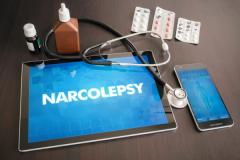
Current State of Treatment Landscape and Unmet Needs in Narcolepsy Management
Panelists discuss the evolving treatment landscape for narcolepsy, highlighting the growing availability of personalized therapies, persistent challenges with diagnosis and access, and the importance of clinician advocacy and education to ensure timely, individualized care for patients.
Episodes in this series

The current treatment landscape for narcolepsy has evolved significantly in recent years, offering patients more options and greater personalization of care. Just a few years ago, only a limited number of FDA-approved therapies were available, but the past 5 years have brought the approval of several new medications. These additions have expanded the toolkit available to clinicians, enabling a more tailored approach to managing symptoms and improving quality of life for adults living with narcolepsy.
Despite this progress, several challenges persist in diagnosis and treatment. One of the major ongoing barriers is access to timely, accurate diagnosis and appropriate therapies. Delays in diagnosis remain common due to the subtle or misunderstood nature of narcolepsy symptoms. Once treatment is initiated, navigating insurance requirements, such as step therapy and prior authorizations, can further delay or complicate access to effective medications. Clinicians often need to advocate persistently to overcome these administrative obstacles.
Looking ahead, continued expansion of treatment options and improved access will be key to optimizing care. The future of narcolepsy management lies not only in new pharmacologic therapies but also in broader awareness among both patients and health care professionals. As new treatments emerge and awareness grows, there is potential to significantly reduce the burden of disease. Ensuring that patients receive timely diagnoses and have access to individualized, evidence-based care remains a top priority for sleep medicine professionals.
Newsletter
Receive trusted psychiatric news, expert analysis, and clinical insights — subscribe today to support your practice and your patients.
















